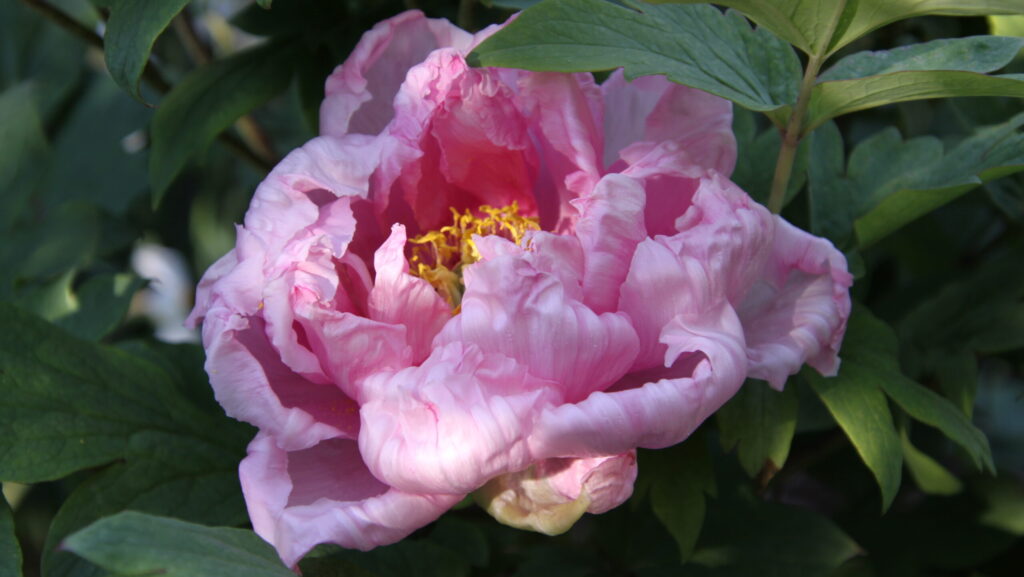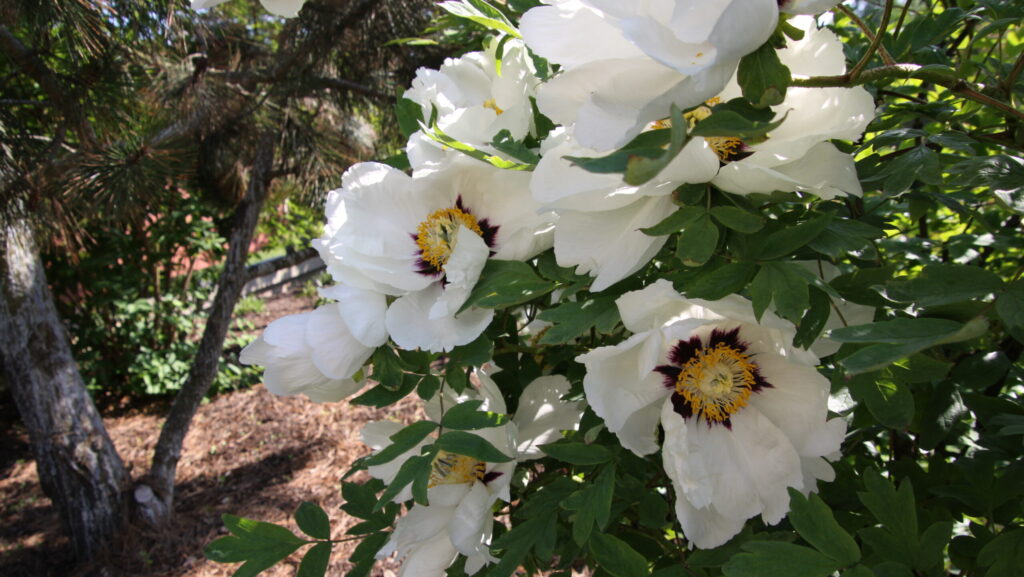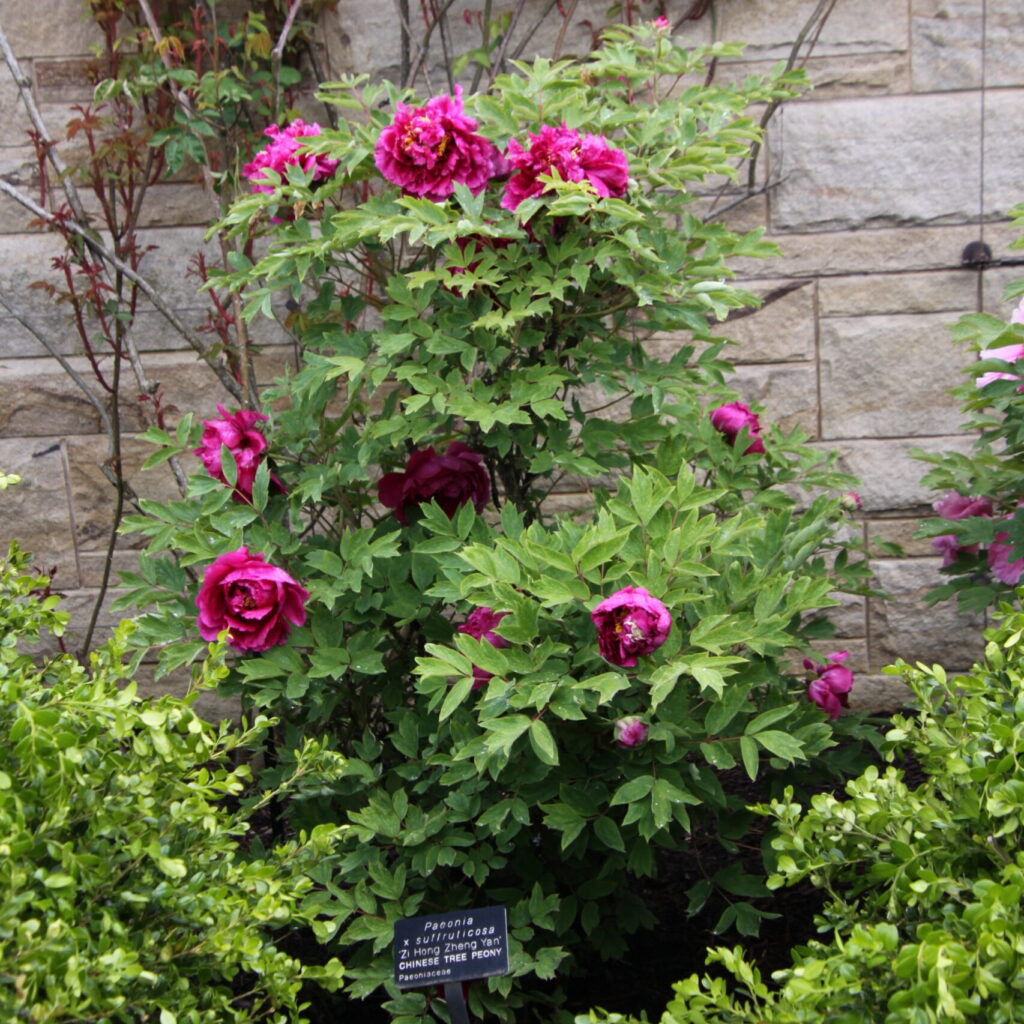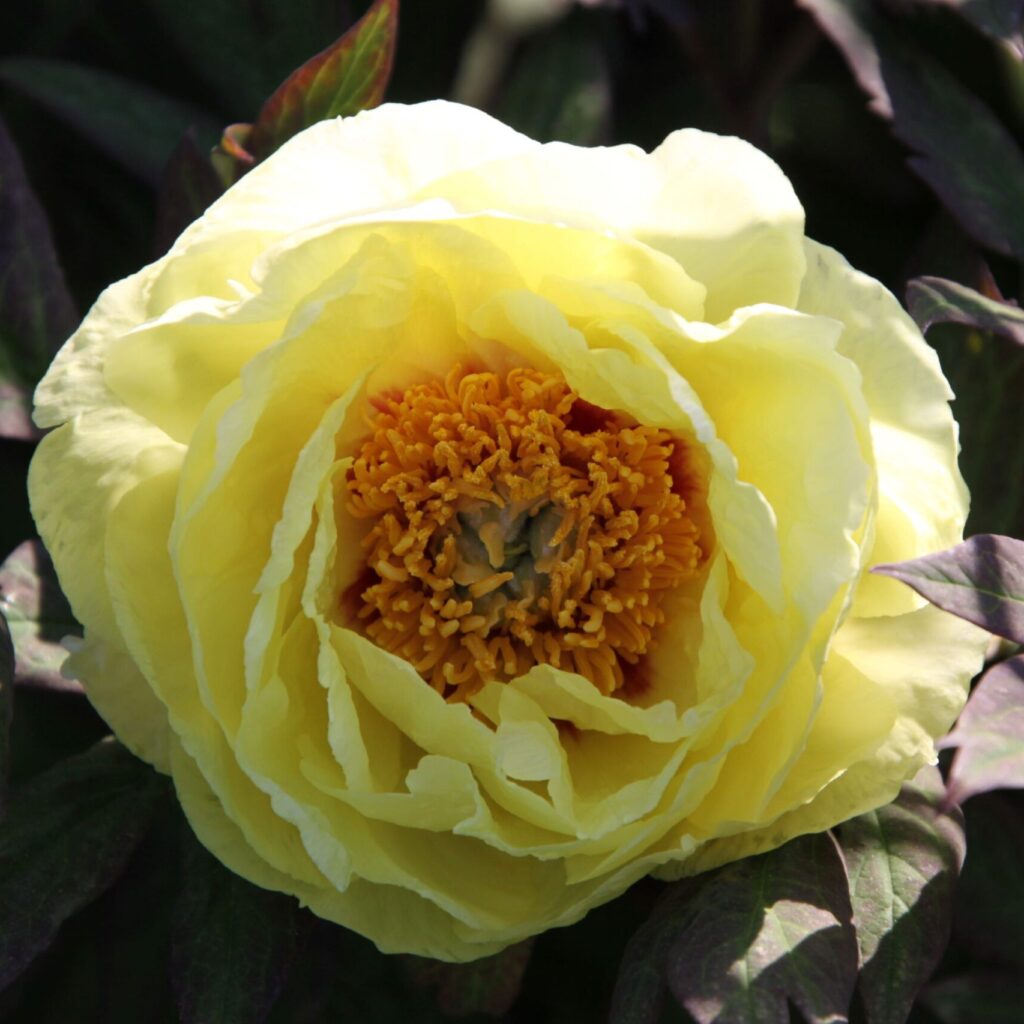
Paeonia × suffruticosa (Botan Group) ‘Hanakisoi’ (Japanese tree peony)
If you’re eager to see beautiful blooms, now is a great time to visit the Rose and Fragrance Garden at the Arboretum’s H.O. Smith Botanic Gardens. You won’t want to miss the short bloom period (usually only 1 to 2 weeks) of the Arboretum’s hybrid tree peonies (Paeonia × suffruticosa)! The collection boasts 37 Japanese and Chinese tree peonies, along with 20 herbaceous peonies that bloom at different times. Tree peonies usually reach their peak around Mother’s Day, while herbaceous peonies typically bloom around Memorial Day. However, cooler weather can delay and extend the bloom period while warmer spring temperatures may shorten it.
- Paeonia × suffruticosa (Mudan – Central Plains Group) ‘Zi Hong Zheng Yan'(Chinese tree peony)
- Paeonia (American Group) ‘High Noon’ ( lutea-hybrid tree peony)
The tree peonies, with their fragrant and intricately designed flowers, grow on sturdy shrubs that can endure harsh cold. Unlike familiar herbaceous garden peonies (Paeonia lactiflora), woodland peonies (Paeonia obovata), fernleaf peonies (Paeonia tenuifolia), and itoh group or intersectional hybrid peonies (tree peony and herbaceous peony cross), tree peony stems remain intact year-round.
These shrubs have been cultivated in Asia for millennia, with hybrids likely originating in Chinese gardens where various peony species were grown closely together. They were introduced to Japan in the 700s and to Western countries in the 1780s. Today, plant breeders continue to create new hybrids, experimenting with different flower shapes, colors, and scents.
When you visit the Arboretum’s peony collection, keep an eye out for large single or double flowers in a range of hues including white, yellow, pink, crimson, and magenta, all beckoning you to explore the Rose and Fragrance Garden.

Paeonia rockii (Mudan – Gansu Group) ‘Lan He’ (Chinese tree peony)


